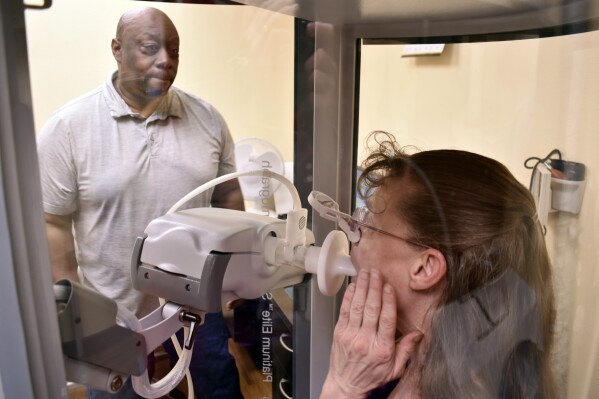Every day along the 600-mile front line of Russia’s 25-month wider war on Ukraine, Russian infantry attack Ukrainian positions, often on foot. Every day, potentially hundreds of Russians die in the process.
Russia’s cataclysmic casualties in Ukraine – perhaps more than 400,000 killed and wounded since February 2022 – have compelled Russian engineers to redouble their efforts to develop remote-controlled systems that might replace flesh-and-blood soldiers on some of the most dangerous missions.
That’s right: ground drones. Or what armies call “unmanned ground vehicles,” UGVs.
While both sides in Russia’s war on Ukraine have deployed simple, radio-controlled wheeled and tracked vehicles for non-combat missions – hauling supplies, laying mines and transporting casualties – it wasn’t until late March that an armed UGV, a Russian model, fired shots in anger in a major ground assault.
That first robotic attack ended in disaster for the experimental UGVs, however. They fell victim to the most dangerous weapons on the Ukraine battlefield: other drones. Unmanned aerial vehicles.
And that’s the main problem UGVs must contend with as they evolve from experiments into weapons of war. UAVs are way ahead. “Anything that moves on the battlefield is seen and hit with a drone,” said Samuel Bendett, an analyst with CNA, a think-tank in Virginia.
So while UGVs like those that rolled into battle last month might replace a few human soldiers on a few missions in the army that has been first to deploy them – the Russian army – these ground robots aren’t likely to last very long.
And that raises the question of cost-effectiveness. In the Russian army, life is cheap. But robots are expensive. Perhaps too expensive when UAVs might hunt them down and destroy them in their first hour in combat.
We don’t know much about the approximately five-foot-long, tracked UGVs that the Russian army deployed around the ruins of the eastern city of Avdiivka last month. Similar in appearance to bomb-disposal robots and armed with automatic grenade-launchers, the UGVs seem to be directly steered via radio by a human operator.
“As part of the combat mission, a group of assault drones took part in supporting the assault operations, ensuring the suppression of enemy positions,” Russian propagandist Boris Rozhin wrote.
Rozhin claimed the UGVs fired hundreds of grenades at Ukrainian positions. The trial by combat proved the robots warrant “further development.” “In the future,” Rozhin wrote, “such platforms will take their place on the battlefield.”
What Rozhin didn’t mention is that, during the March assault, aerial drones belonging to the Ukrainian army’s elite 47th Mechanized Brigade spotted the UGVs and struck them, first immobilizing then destroying at least two of the robots out of the five or six the Russians seem to have built.
The Russian UGVs aren’t alone in succumbing to Ukraine’s UAVs, of course. A network of Ukrainian workshops churns out 100,000 explosive first-person-view drones a month, and Ukrainian brigades have used them to destroy thousands of Russian vehicles and kill thousands – or even tens of thousands – of Russian troops.
But a newly-mobilized Russian soldier earns just $1,700 a month and, incredibly, is still an abundant resource. Even after burying hundreds of thousands of soldiers since widening its war on Ukraine, the Kremlin still manages to recruit or draft 30,000 fresh soldiers every month – enough to make good its front-line losses.
If Russia’s UGVs are anything like, say, the Talon – the United States’ classic UGV – they might cost more than $100,000 each. And that might make them too expensive to replace a cheaper resource: a human being.
The answer, for military robot developers and especially Russian developers, might be to look to the skies – and do for UGVs what developers did a year ago for UAVs. Make them smaller and cheaper.
At the outset of Russia’s wider war on Ukraine, both sides mostly flew large, multi-ton, multi-million-dollar UAVs – and lost them by the dozen to ground-based air-defenses. A year later, both sides had mostly shifted their money and effort to FPV drones that might weigh a couple of pounds and cost $500.
Simple and cheap, these FPV drones are now everywhere all the time over the front line in Ukraine. They function as surveillance drones, scanning with inexpensive cameras, until their operators spot a target. Then the drones become killers – hurtling into their targets with an explosive payload, and detonating with the force of a rocket-propelled grenade.
If UGVs can become as small, cheap and lethal as FPV UAVs, they might have a place on the battlefield.
“It’s likely that other UGV types fielded in the coming months are not going to be large, sophisticated and expensive UGV designs,” Bendett said.
In that sense, those Russian ground robots that fought their type’s first-ever major battle last month may have proved a concept that’s already obsolete. The robots that come after them might be smaller and cheaper.
Small enough and cheap enough, perhaps, to actually replace human soldiers on a large scale.
Disclaimer: The copyright of this article belongs to the original author. Reposting this article is solely for the purpose of information dissemination and does not constitute any investment advice. If there is any infringement, please contact us immediately. We will make corrections or deletions as necessary. Thank you.



